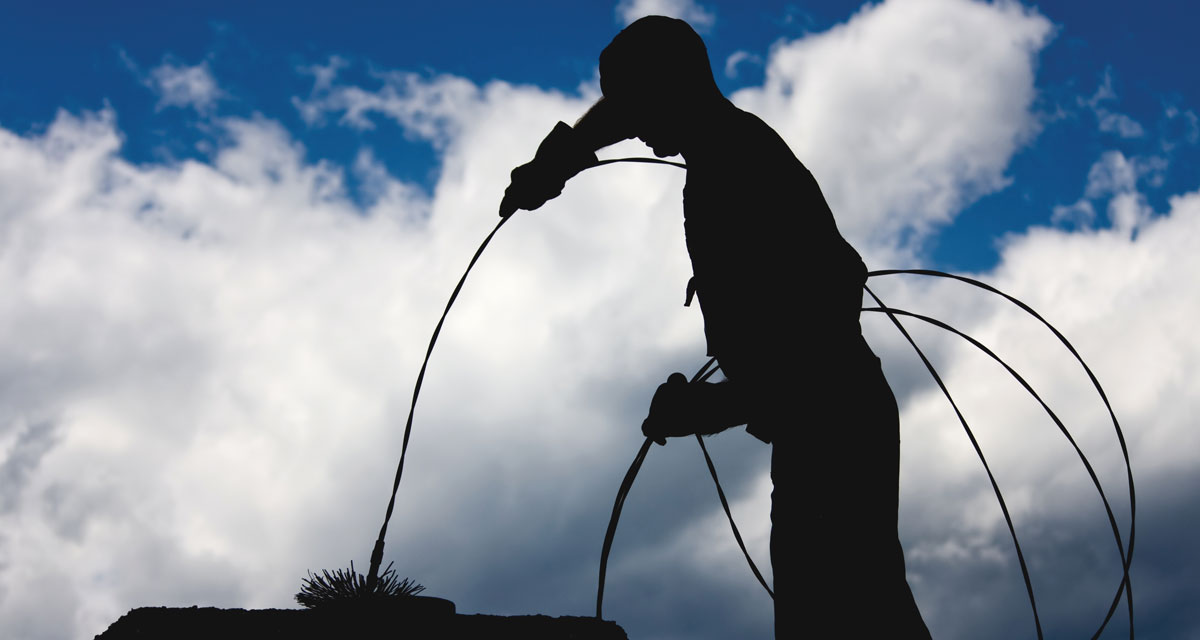During chilly nights, it becomes routine to gather tinder and kindling, and strike the match to start the initial spark. Gazing at the dancing flames soothes the mind, relaxes the body into readiness for sleep. Without an inspection, layers of hardened creosote coat the inside pipes and the chimney liner. The deposits can plug dampers and potentially, the chimney cap. As these thicken, a gummy, foul-smelling, corrosive substance detaches and falls to the fireplace floor, leaving behind the combustible remnants. Some individuals claim the sound begins as a rumbling that grows louder, while others hear nothing. Witnessing the effects requires homeowners to stand outside and see the flames shooting out several feet above the chimney.
Households cannot depend on smoke alarms to sound. Creosote eventually burns away, reducing flames to smoke, which exits through the chimney. Will one member hear the crash and encourage family members to leave at once? Any household that uses a fireplace can experience a chimney fire, including new homes! You can save the family from a devastating experience by scheduling annual, professional cleanings.
The Service of a Chimney Sweep
In researching a professional who can remove creosote, clean smoke ducts, dampers, flue pipes, chimney linings, and fireboxes, homeowners will want a CSIA certified company with credentials to evaluate and maintain flue linings and venting systems, and perform necessary repairs. The modern-day sweep includes the use of brushes and vacuums, cleansers, and cameras to ensure the fireplace, chimney, and caps are structurally sound for proper draft and flow. Whether the chimney is old or new, an annual inspection and cleaning can create a feeling of security each time a fire is lit.
Safety Practices
In the United States, approximately 25,000 house owners incur over 125 million dollars in property damage annually from chimney fires. As fire causes cracking, warping, or melting of the masonry or metal within the walls, sparks and embers often escape to other areas in walls, roofs, or attics, and spread throughout the house, putting lives at risk.
- Wood Condition and Type Matters: Since the culprit often is a build-up of creosote, homeowners should care what type of wood enters the firebox. For kindling, use sticks or branches. Crumpled newspaper or pinecones work quite well for tinder. Never use cloth, glossy paper, or cardboard, which may include chemicals which can release toxins. Always use seasoned hardwood (note: pine is NOT a hardwood!) which has had time to dry for a minimum of six months. Greenwood is often heavy, due to its high moisture content, and rarely has cracks. If burned, the unmistakable sound of sizzling, loud pops, flying sparks, and significant smoke indicate it’s not ready. For ultimate safety, consider purchasing a particular gadget called a wood moisture meter!
- Open the Damper: One mistake in the excitement of enjoying a fire is not remembering to pull down on the metal plate, called the damper. Shine a light up into the flue. When not in use, the damper should remain closed. Without a place for the smoke to travel, it will consume the main house.
- Install a Chimney Cap: All chimneys need a protective covering designed from steel or copper mesh to protect against animals, debris, rain, and downdrafts. Caps prevent a term called back puffing, which means smoke reenters the chimney and seeps into the home.
- Extinguish a Fire When Unattended: Fireplaces, such as wood, gas, and pellet stoves, can heat the home safely due to the locking mechanism of metal or glass doors. Without the added protection, fires require extinguishing by spreading out the wood and embers with a fire poker and allowing them to settle. Sodium bicarbonate, known as baking soda, and flour are effective powders to smother fire.
- The Ash Bucket: The residue ash is misleading. Even after two days, glowing embers remain embedded in the pile. The use of seasoned, dry wood is equally as important as removing the ash. Always use a galvanized or metal bucket free of holes or rust. Never place the contents in or near the house and always away from anything combustible, especially leaves. Use ash in your garden by digging a hole and covering it with soil.
Call a professional chimney sweep service today! Ensure every night is safe rather than full of panic, a call to 911, and evacuating loved ones and pets!























